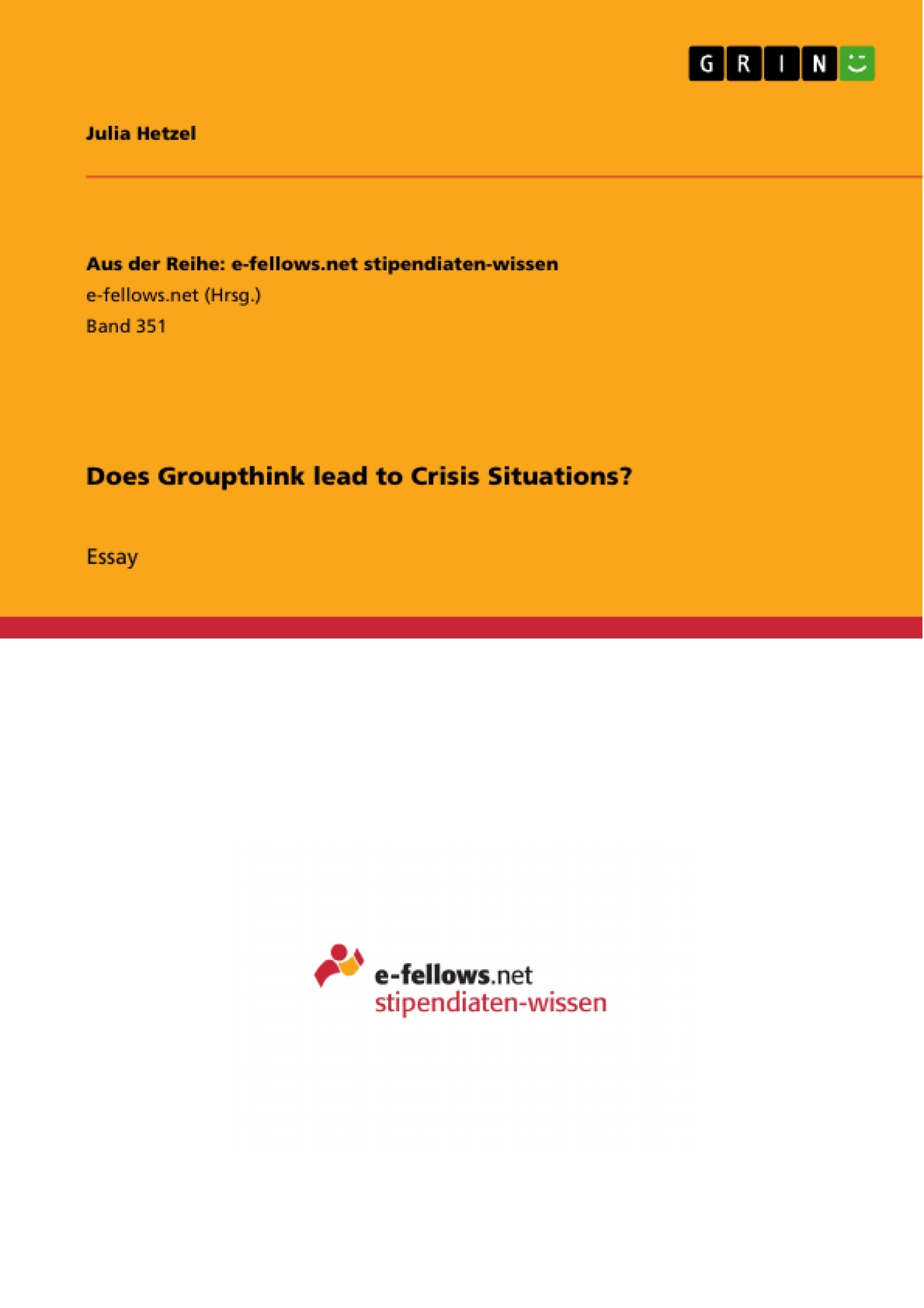Groupthink, a term marked by Irving Janis, is a model to describe the possible downsides of a decision made by a group. Although the concept is widely accepted, it is highly controversial. This essay gives an overview over Janis’ concept and tries to show this controversy by illustrating the criticism of the model. At the end it is answered the question if groupthink can be seen as the reason for decisions that lead to crisis situations.
Inhaltsverzeichnis
- Introduction
- Definition of the concept
- History of the concept
- The use of the concept
- Examples of the concept
- A criticism of the concept
- Conclusion
- Bibliography
Zielsetzung und Themenschwerpunkte
This essay aims to provide a comprehensive overview of Irving Janis' groupthink concept, exploring its historical context, applications, and criticisms. The essay will analyze whether groupthink can be identified as a contributing factor to decisions leading to crisis situations.
- Definition and characteristics of groupthink
- Historical development and application of the concept
- Analysis of case studies where groupthink may have played a role
- Critical evaluation of the groupthink model
- Discussion of the relationship between groupthink and crisis situations
Zusammenfassung der Kapitel
- Introduction: This chapter introduces the concept of groupthink and its relevance to decision-making, particularly in relation to crisis situations. It outlines the essay's structure and the key questions to be addressed.
- Definition of the concept: This chapter provides a detailed definition of groupthink, outlining the conditions under which it is likely to occur, including high group cohesiveness and specific group and situational factors. It also discusses the symptoms of groupthink, such as the illusion of invulnerability, collective rationalization, and pressure against deviationists.
- History of the concept: This chapter explores the historical development of the groupthink concept, tracing its origins and evolution within the field of social psychology. It examines the key figures and events that shaped the concept's understanding and application.
- The use of the concept: This chapter examines the practical applications of the groupthink concept in various fields, such as business, politics, and military decision-making. It explores how the concept has been used to analyze and understand group dynamics and decision-making processes.
- Examples of the concept: This chapter presents case studies where groupthink is believed to have played a role in decision-making, leading to either positive or negative outcomes. It analyzes these cases to illustrate the potential consequences of groupthink and its impact on decision quality.
- A criticism of the concept: This chapter critically examines the groupthink model, highlighting its limitations and weaknesses. It discusses alternative explanations for group decision-making failures and explores the potential biases inherent in the groupthink concept.
Schlüsselwörter
The keywords and focus themes of this text include groupthink, decision-making, crisis situations, group cohesiveness, group dynamics, social psychology, case studies, and critical analysis. The essay explores the concept of groupthink, its historical development, its application in various fields, and its potential impact on decision-making, particularly in relation to crisis situations. It also examines the criticisms and limitations of the groupthink model, providing a comprehensive overview of this influential concept.
- Citar trabajo
- Julia Hetzel (Autor), 2011, Does Groupthink lead to Crisis Situations?, Múnich, GRIN Verlag, https://www.grin.com/document/184398
-

-

-

-
¡Carge sus propios textos! Gane dinero y un iPhone X. -

-
¡Carge sus propios textos! Gane dinero y un iPhone X. -

-
¡Carge sus propios textos! Gane dinero y un iPhone X. -

-
¡Carge sus propios textos! Gane dinero y un iPhone X. -

-
¡Carge sus propios textos! Gane dinero y un iPhone X.

